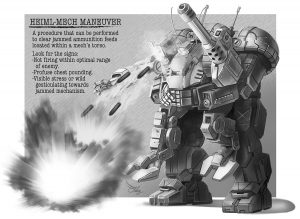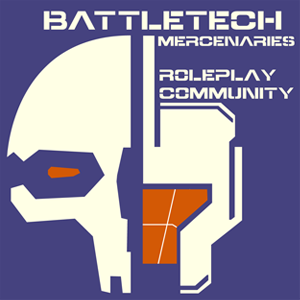Warlord
Sarna News

- Bad ‘Mechs - Sentinel
- HEXTECH Review - Wave 3 Brings More Urban Options To Your Battlefield
- Your BattleTech News Round-Up For March, 2024
- Crashing 'Mechs With Jennifer Brozek, Author Of The Rogue Academy Trilogy
- Getting The Word Out With Rem Alternis, Catalyst Community & Marketing Director
- Read more →

| |
| Warlord | |
|---|---|
| Production information | |
| Manufacturer | General Motors |
| Model | BLR-2D |
| Class | Assault |
| Technical specifications | |
| Mass | 80 tons |
| Chassis | Hollis Mark XII Endo Steel |
| Armor | Stashield Special Heavy Standard |
| Engine | Pitban 320 Fusion Engine |
| Speed | 64.5 km/h |
| Armament |
2 x Heavy PPCs |
| BV (2.0) | 2,006[1] |
Description
The Warlord was originally intended as a streamlined, all-energy weapon variation of the classic BLR-1G BattleMaster, but the changes and weight reduction were significant enough that GM's intellectual property lawyers insisted on a new name.[2]
While not normally a GM product, or even a design commonly produced in the Federated Suns, the design specs for the BattleMaster were supplied by the Sanromea-Davions of El Dorado, wealthy bankers who had previously invested in the now-Clan held Trellshire Heavy Industries facility on Twycross. While lacking political clout outside of their homeworld (except via their impressive banking ties), the Sanromea-Davions wanted BattleMechs and the planet's advanced civilian industries, virtually untouched by the Succession and FedCom Civil Wars, allowed GM to bring virtually all aspects of production to one planet, free from disruptions by the Jihad.[2]
As much as possible has been done to simplify and streamline construction of the Warlord, including avoiding the wiring nightmare represented by the BattleMaster's second cockpit by just leaving the space empty. Save for the focusing lens of the lasers, virtually every component was easily within the production ability of the Helm Memory Core-enhanced factories on El Dorado, with only the Endo Steel chassis produced off world.[2]
Armament
Designed with the goal of lengthy battle field endurance and avoiding reliance upon fragile supply trains in the Jihad, the Warlord is armed with an all energy weapon load-out consisting of two arm mounted Magna Hellfire Heavy PPCs and six Martell ER Medium Lasers split between each side torso. The large number of double heat sinks carried allows the Warlord to fire either both PPCs or all lasers near continuously whilst moving. The advanced PPCs use much of the parts of the standard and easily available Manga Hellstar PPCs, while the specialized focusing mirrors of the ER lasers are the only exotic component, greatly aiding both construction and repair.[3]
Variants
- BLR-2G - The 2G is a variant developed to overcome the production bottleneck the off-world construction of chassis represented as disruptions of interstellar shipping increased. While El Dorado lacked the orbital facilities to produce Endo Steel, they readily produced the advanced crystalline polymers shared by double heat sinks and XL Engines. Saving weight on the power plant allowed a switch to a standard chassis, with the six ER lasers replaced with ten standard Medium Lasers mounted in a two over, three under configuration. An additional ton of armor is token recognition of the increased fragility of an XL engine.[2]
Trivia
The author's original solicitation for the GM-built Warlord was a 75-ton version of the Battlemaster that would be "industrially streamlined" to use more common components than 4-ton gyroscopes and 340-rated engines. The large number of Inner Sphere 4/6, 75-ton designs (like GM's 75-ton Marauders) meant that the Warlord would have a plentiful supply of parts for construction and repair.
This TR:3075 entry reached the "raw draft" stage with most of the continuity tie-ins established when shuffling of other 'Mechs in TR:3075 meant that the Federated Suns needed an 80-ton 'Mech. The Warlord was bumped to 80 tons, which somewhat compromised the original concept. The 80-ton weight class was certainly more populated than the 85-ton 'Mech weight class and thus the write-up only required minimal alterations, but 80 tons would be a less expedient size for the Sanromea-Davions and General Motors to quickly implement.
References
- Technical Readout: 3075, pp. 88-89

